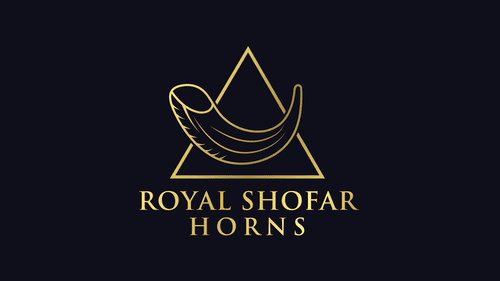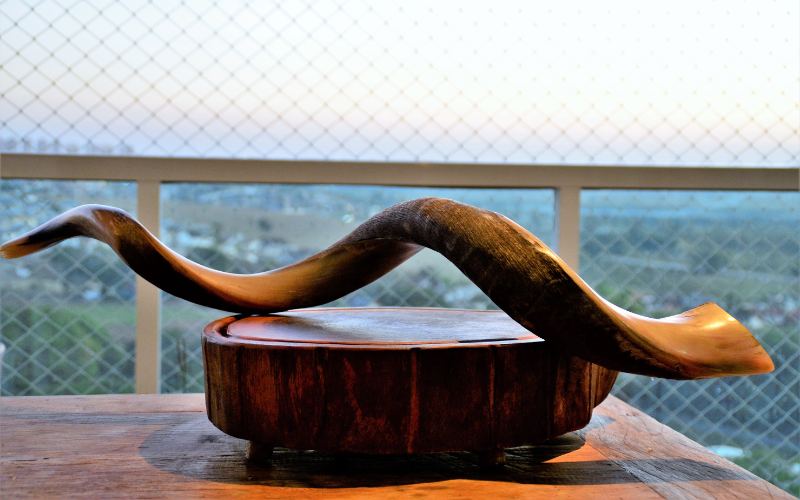מאמרים אודות שופרות
Making shofars: an exciting journey from vein to voice
Shofar Production: A Journey from Horn to Sound
The shofar, an ancient wind instrument with profound spiritual and cultural significance, undergoes a complex and meticulous production process. This article takes you on an exciting journey into the heart of shofar production, from selecting the raw material to creating its unique and moving sound.
Selecting the Raw Material: The Heart of the Shofar
The process begins with the careful selection of the raw material. Traditionally, shofars are made from the horns of various animals, primarily ram, kudu, and oryx. Each type of horn has its unique characteristics that affect the shofar’s sound, strength, and durability.
- Ram’s Horn: The most popular material for shofar production. Ram horns are known for their flexibility and strength, allowing for the creation of a wide range of sounds.
- Kudu Horn: Known for its thickness and density, the kudu horn produces a particularly deep and powerful sound. Shofars made from kudu horns are considered some of the highest quality.
- Oryx Horn: Distinguished by its unique shape, the oryx horn gives the shofar an aesthetically distinctive appearance. Though less common, oryx shofars are sought after by collectors.
The Production Process: Key Stages
Shofar production is a lengthy and intricate process that requires great skill and patience. The main stages are as follows:
- Selecting the Horn: After choosing the type of horn, a rigorous selection process ensures that only the highest-quality horns are used. The horns are checked for thickness, shape, strength, and absence of defects.
- Preparing the Horn: The horn undergoes extensive preparation, including thorough cleaning to remove any skin, fat, and dirt that has accumulated on it.
- Cutting the Horn: The horn is cut to the desired size, ensuring that the natural structure of the horn is preserved.
- Shaping the Mouthpiece: Shaping the mouthpiece is one of the most crucial steps in the production process. The mouthpiece is the part where the blower blows into, directly impacting the sound quality. This is done manually, with each mouthpiece tailored to the specific shofar.
- Extracting the Core: The internal core of the horn, composed of bone material, is carefully removed to avoid damaging the outer structure of the horn.
- Polishing and Buffing: After the core is extracted, the horn undergoes polishing and buffing to give it a shiny and aesthetically pleasing finish.
- Drying and Hardening: The horn is dried and hardened under controlled conditions to ensure its long-term durability.
- Sound Testing: The completed shofar is meticulously tested by an expert to ensure that its sound meets the highest standards.
Types of Shofars and Their Characteristics
There are many types of shofars, varying in shape, size, sound, and usage. Some of the most common types include:
- Ram’s Horn Shofar: The most common shofar, known for its powerful and versatile sound.
- Kudu Shofar: Known for its particularly deep and strong sound, often used for special occasions.
- Oryx Shofar: Distinguished by its unique appearance, primarily used for decoration.
- Decorative Shofar: A shofar that undergoes additional ornamentation, such as engraving or silver plating, designed for special use.
The Shofar in Jewish Culture
The shofar holds great significance in Jewish culture and is used in various religious ceremonies, such as Rosh Hashanah and Yom Kippur. The sound of the shofar symbolizes a call to repentance, spiritual awakening, and the connection between humanity and God.
Conclusion
Shofar production is an ancient art that requires great skill and patience. Every shofar is a unique creation, carrying with it the story of the material from which it was made and the artist who crafted it. The powerful and emotional sound of the shofar resonates within the soul, reminding us of our deep connection to tradition and culture.


 עברית
עברית

מגוון שופרות מהודרות לרכישה מהירה
Yemenite Kudu Shofar – Strictly Kosher, 100-110 cm
Yemenite Kudu Shofar – Strictly Kosher, 70-80 cm
Yemenite Kudu Shofar – Strictly Kosher, 90-100 cm
Yemenite Kudu Shofar – Strictly Kosher, 50-60 cm
Yemenite Kudu Shofar – Strictly Kosher, 40-50 cm
deer shofar – size 35-40 cm
Yemenite Kudu Shofar – Strictly Kosher, 110-120 cm
deer shofar – size 50-55 cm
deer shofar – size 25-30 cm
Yemenite Kudu Shofar – Strictly Kosher, 60-70 cm
deer shofar – size 30-35 cm
deer shofar – size 55-60 cm
Yemenite Kudu Shofar – Strictly Kosher, 120+ cm
Shofar Oreix (Shofar Ram)
Yemenite Kudu Shofar – Strictly Kosher, 80-90 cm
deer shofar – size 40-45 cm